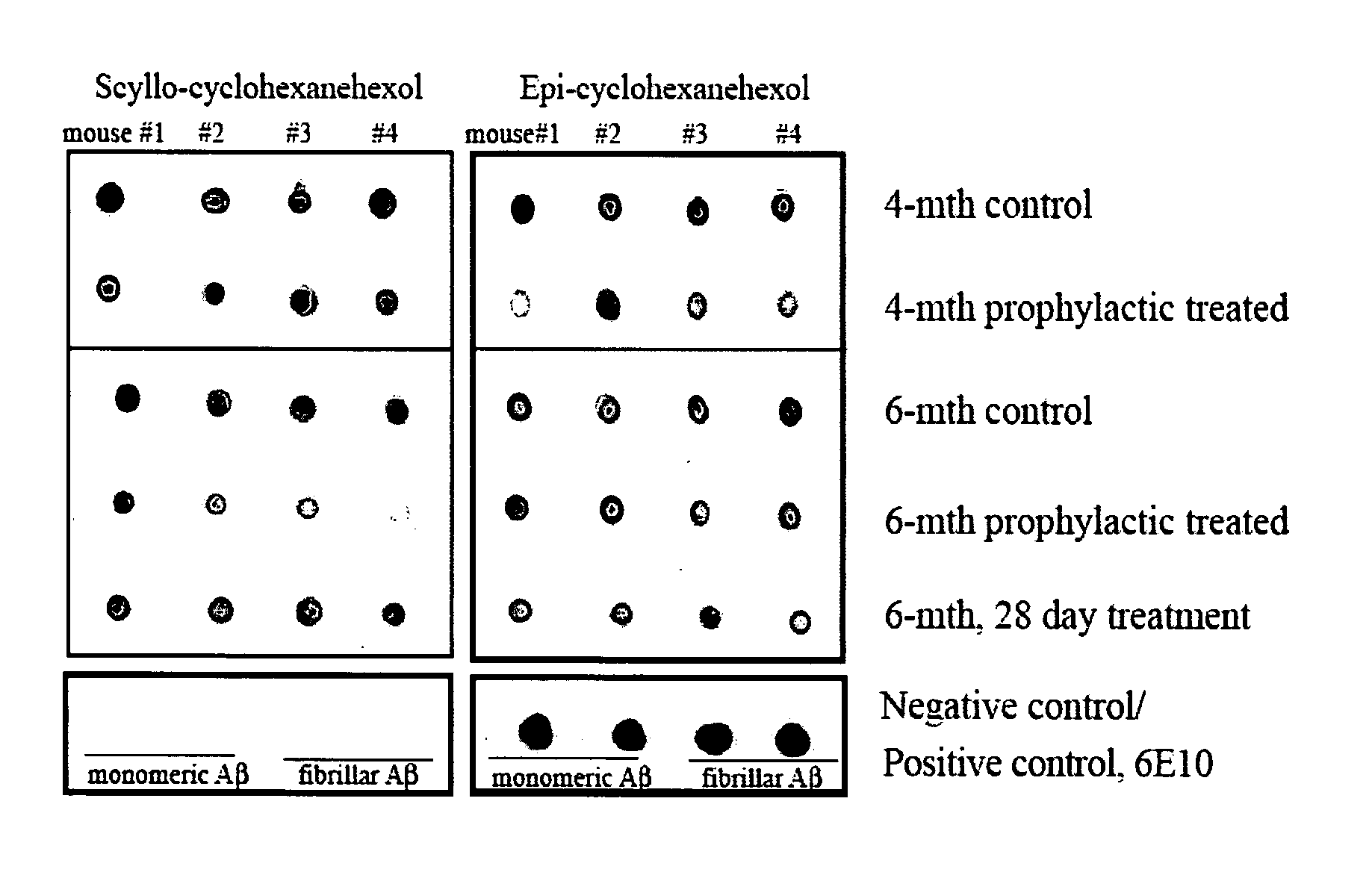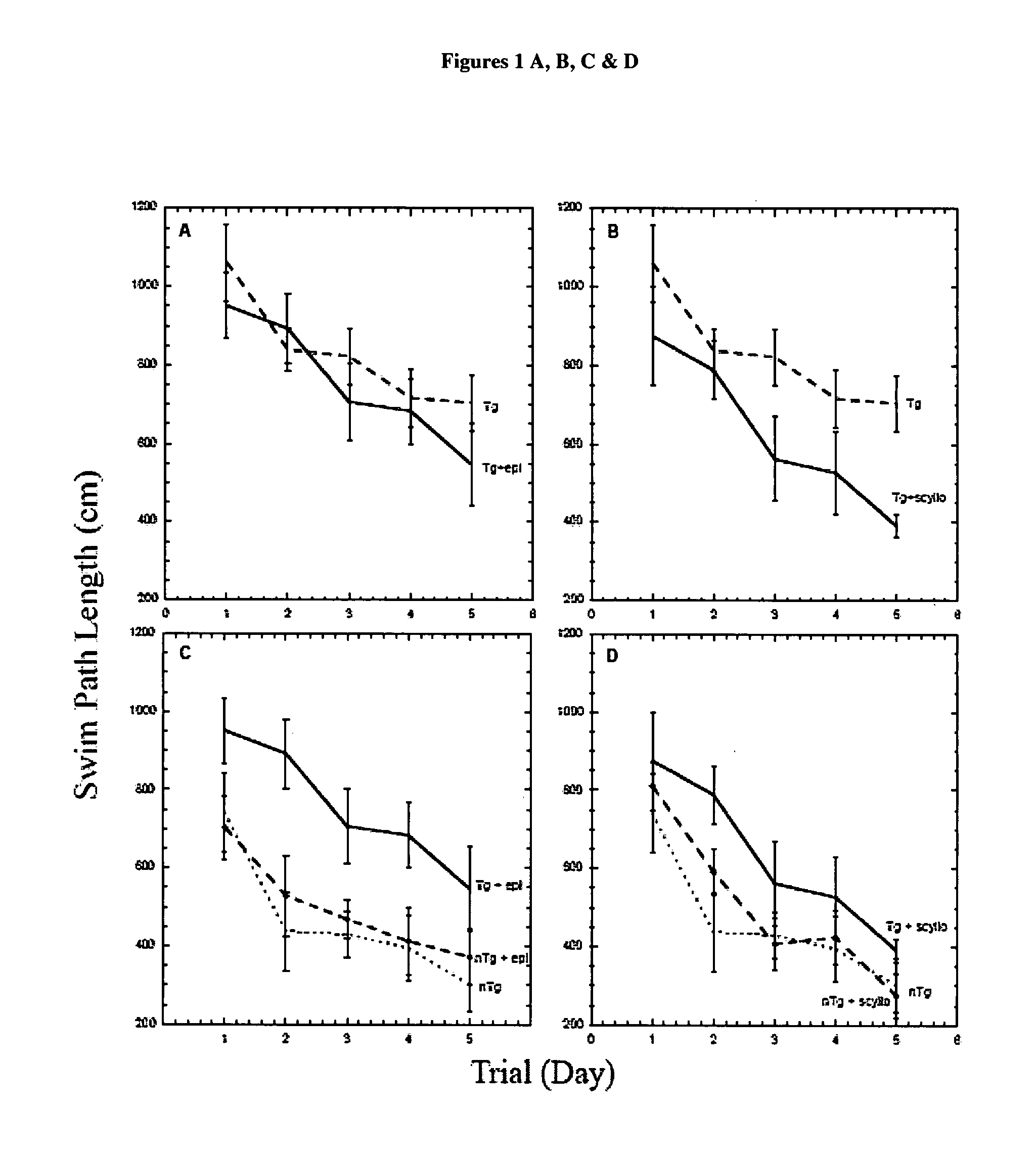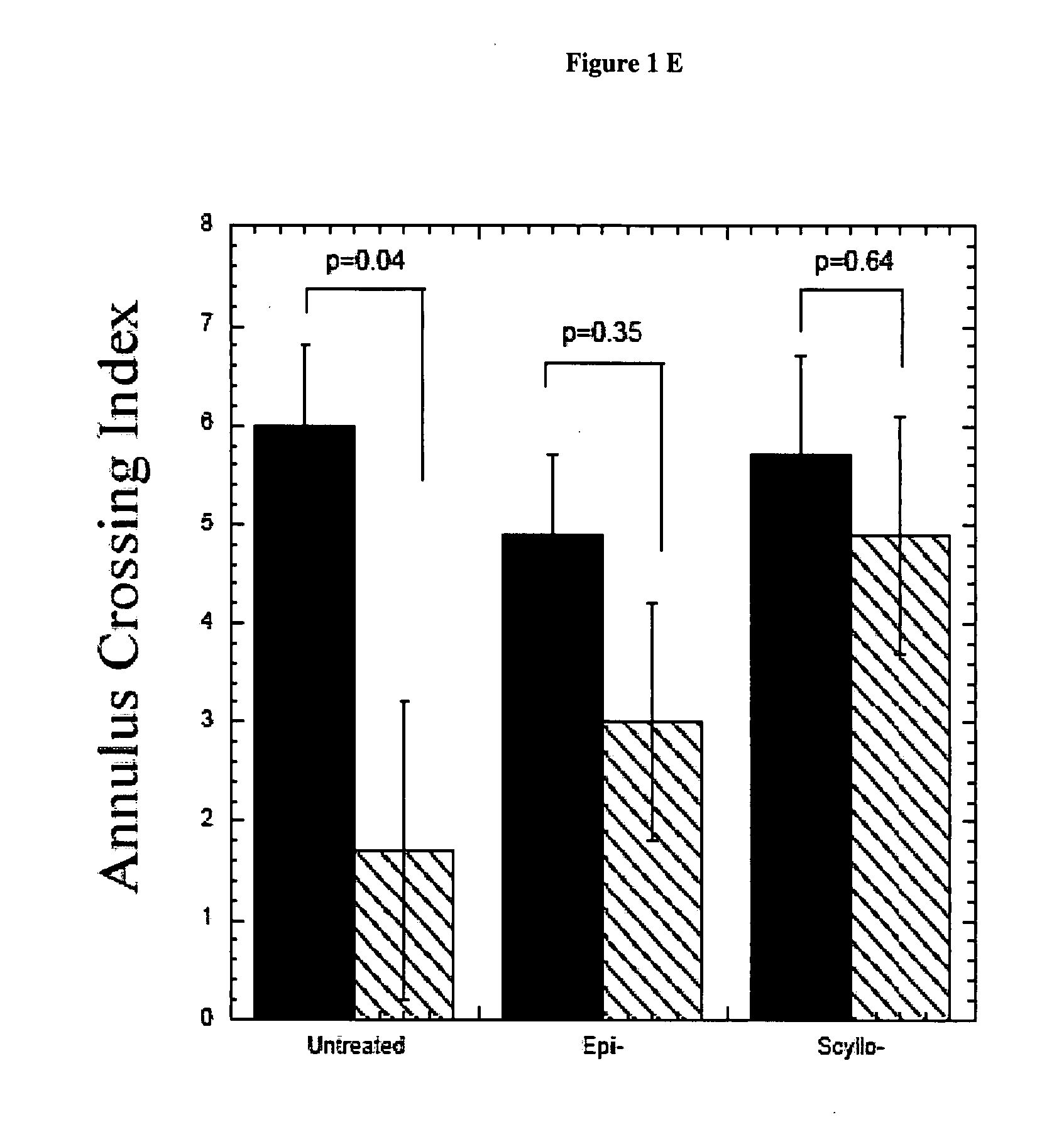Compositions and methods for treatment of disorders of protein aggregation
a protein aggregation and composition technology, applied in the field of compositions and compositions of epiinositol compounds, can solve the problems of unsuitable clinical use of partial vaccines, achieve the effects of accelerating the disassembly of preformed fibrils, prolonging the beneficial effect, and increasing or restoring long-term potentiation
- Summary
- Abstract
- Description
- Claims
- Application Information
AI Technical Summary
Benefits of technology
Problems solved by technology
Method used
Image
Examples
example 1
[0226] The following methods were used in the studies described in this example:
[0227] Mice. Experimental groups of TgCRND8 mice [12, 13] on a C3H / B6 outbred background were initially treated with either epi- or scyllo-cyclohexanehexol 30 mg / day. This initial dosage was chosen based upon the dosage of myo-cyclohexanehexol (6-18 grams / day / adult or 86-257 mg / Kg / day) that is typically administered to human patients for various psychiatric disorders [21]. In these dosages, myo-cyclohexanehexol had no toxicity in humans or animals. The studies described herein were repeated using doses of 5 mg / Kg / day-100 mg / Kg / day, and these alternate doses have generated the same results (data not shown). A cohort of animals (n=10 mice per treatment arm) entered the study at five months of age, and outcomes were then analyzed after one month of treatment. The body weight, coat characteristics and in cage behaviour were monitored. Mannitol was used as a negative control for potential alterations in calo...
example 2
Cyclohexanehexol-Based Inhibitors of Aβ-Aggregation Prevent and Reverse Alzheimer-Like Features in a Transgenic Model of Alzheimer Disease.
[0249] When given orally to a transgenic mouse model of Alzheimer Disease (AD), cyclohexanehexol stereoisomers inhibit aggregation of amyloid β-peptide (Aβ) in the brain and ameliorate several AD-like phenotypes in these mice, including impaired cognition, altered synaptic physiology, cerebral Aβ and accelerated mortality. These effects occur regardless of whether the compounds are given prior to, or well after the onset of the AD-like phenotype. These compounds preferentially target the soluble oligomers of Aβ both in vitro and in vivo, and have no effects on amyloid precursor protein processing. Dose response curves demonstrate the potential for use as a therapeutic for Alzheimer's disease.
[0250] Multiple lines of evidence suggest that the accumulation of neurotoxic oligomeric / protofibrillar aggregates of amyloid β-peptide (Aβ) is a central ...
example 3
[0254] The following methods were used in the studies described in this example:
Methods:
[0255] Mice. Experimental groups of TgCRND8 mice were administered epi-2-inosose in drinking water, 10 mg / ml. Cohorts of animals entered the study at 5 months of age and outcomes were analyzed after one month. Alternatively, cohorts of animals entered the prophylactic study at 6 weeks of age and outcome measures were analysed at 6-months of age. The body weight, coat characteristics and in cage behaviour was monitored. All experiments were performed according to the Canadian Council on Animal Care guidelines.
[0256] Behavioural tests: Behavioural analyses were performed using the Morris Water Maze test (13, 14). After pre-spatial training, mice underwent place discrimination training for 5 days with 4 trials per day, followed by a cued visible platform to rule out general motivational, learning deficits and motor problems. Behavioural data were subjected to a repeated measures analysis of vari...
PUM
| Property | Measurement | Unit |
|---|---|---|
| Volume | aaaaa | aaaaa |
| Volume | aaaaa | aaaaa |
| Volume | aaaaa | aaaaa |
Abstract
Description
Claims
Application Information
 Login to View More
Login to View More - R&D
- Intellectual Property
- Life Sciences
- Materials
- Tech Scout
- Unparalleled Data Quality
- Higher Quality Content
- 60% Fewer Hallucinations
Browse by: Latest US Patents, China's latest patents, Technical Efficacy Thesaurus, Application Domain, Technology Topic, Popular Technical Reports.
© 2025 PatSnap. All rights reserved.Legal|Privacy policy|Modern Slavery Act Transparency Statement|Sitemap|About US| Contact US: help@patsnap.com



